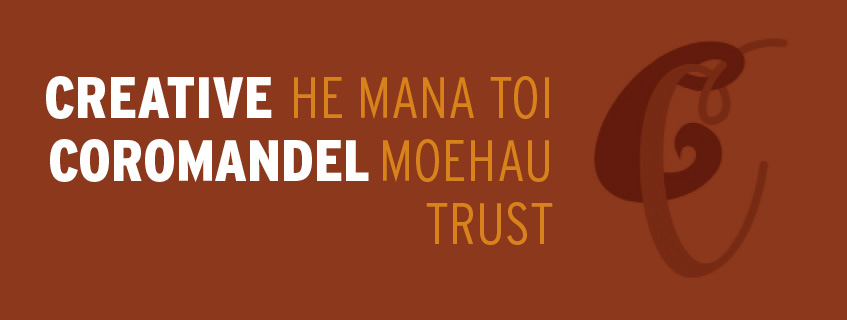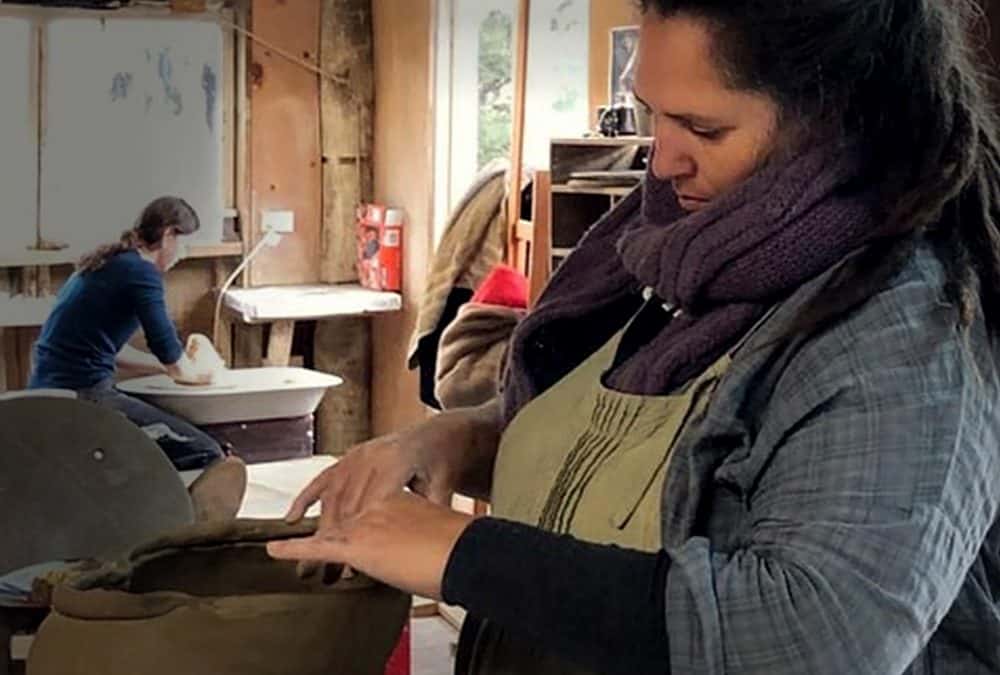Isabel Gilbert talks with Fiona Gates about being a potter versus a ceramist, the sensuality of clay and its raw earthiness, dreams of being a shepherdess and wool crafter, plummeting into ADHD and PTSD, and re-building herself through the journey of uku and connecting to Te Ao Māori, and why you can’t be without your reclaim bucket.
Q: Where do we begin? I have my curiosities and questions, so let’s start with how you describe yourself.
A: Ko Rākautapu toku Maunga
Ko Tapuwae tōku Awa
Ko Hokianga tōku Moana
Ko Ngātokimatawharua tōku Waka
Ko Ngai Tupoto tōku Hapu
Ko Te Rarawa tōku Iwi Ko
Fiona Gates tōku ingoa
I am a Māmā, Neurodivergent, Ringa Toi, Social justice advocate.
Q: Describe where you live.
A: I live in rural Coromandel Peninsula with four of my five tamariki. We have a small whare with a large collection of pottery and art pieces I’ve accumulated. We have a maarakai, orchard and we have many Acocoxóchitl (dahlia) but it is all rather neglected due to finding pottery.
Q: Pottery, yes, that is the impetus that brought us together. Tell me where your potting interest begin? Can you remember when, where, and who inspired you? How long have you had your hands in clay?
A: I don’t remember when I fell for pottery. What I do remember, though is just being so excited coming across pieces and I felt the engagement with ceramics was so different to me compared to painting and sculpture in a traditional sense. It was the tactile nature, the raw earthiness, the curves, how the light hits, the function, or lack of, the humour often too. I fed my passion with op shop finds, books, visits to Driving Creek (surreptitiously, trains for the kids, pottery for me!) and markets and galleries. I love pottery from Aotearoa mostly, both old and new, Barry Brickell, of course, Chester Nealie, Len Castle and the new generation likeRiccardo Scott, Alex Jones, and Laurie Steer. My most loved ones are our amazing Māori potters, Stevei Houkāmau, Carla Ruka, Amorangi Hikuroa, Tracy Keith and the collective Ngā Kaihanga Uku. I really connect to their mahi on a cellular level.
Q: Was there a process in your engagement, your love affair with the practice?
A:When I moved to Te Tara o Ika a Maui 30 years ago, I had a dream to take up pottery or have a flock of sheep to delve into wool craft. Neither happened, life and love and tamariki swallowed me up, and it wasn’t until the end of a toxic relationship, an ADHD and PTSD diagnosis and the need to rebuild myself that I finally had the opportunity to explore Uku. I took a Richard Naylor hand-building workshop with my eldest daughter and haven’t looked back. I told my daughter, Awa, that one workshop does not make a potter and not to let me buy ‘all the things’ like my ADHD brain was telling me to, but eventually, as I fell deeper, I accumulated all the things and have a space in my garage now, complete with a wheel and a small kiln. I took five terms of wheel-throwing classes at Driving Creek Pottery but soon found that hand-building sculptures was where my passion was.
“I am led by emotion in most of my mahi, it’s like I have a purakau that needs speaking or a feeling to explore, and it translates into my hand-built sculptures.”
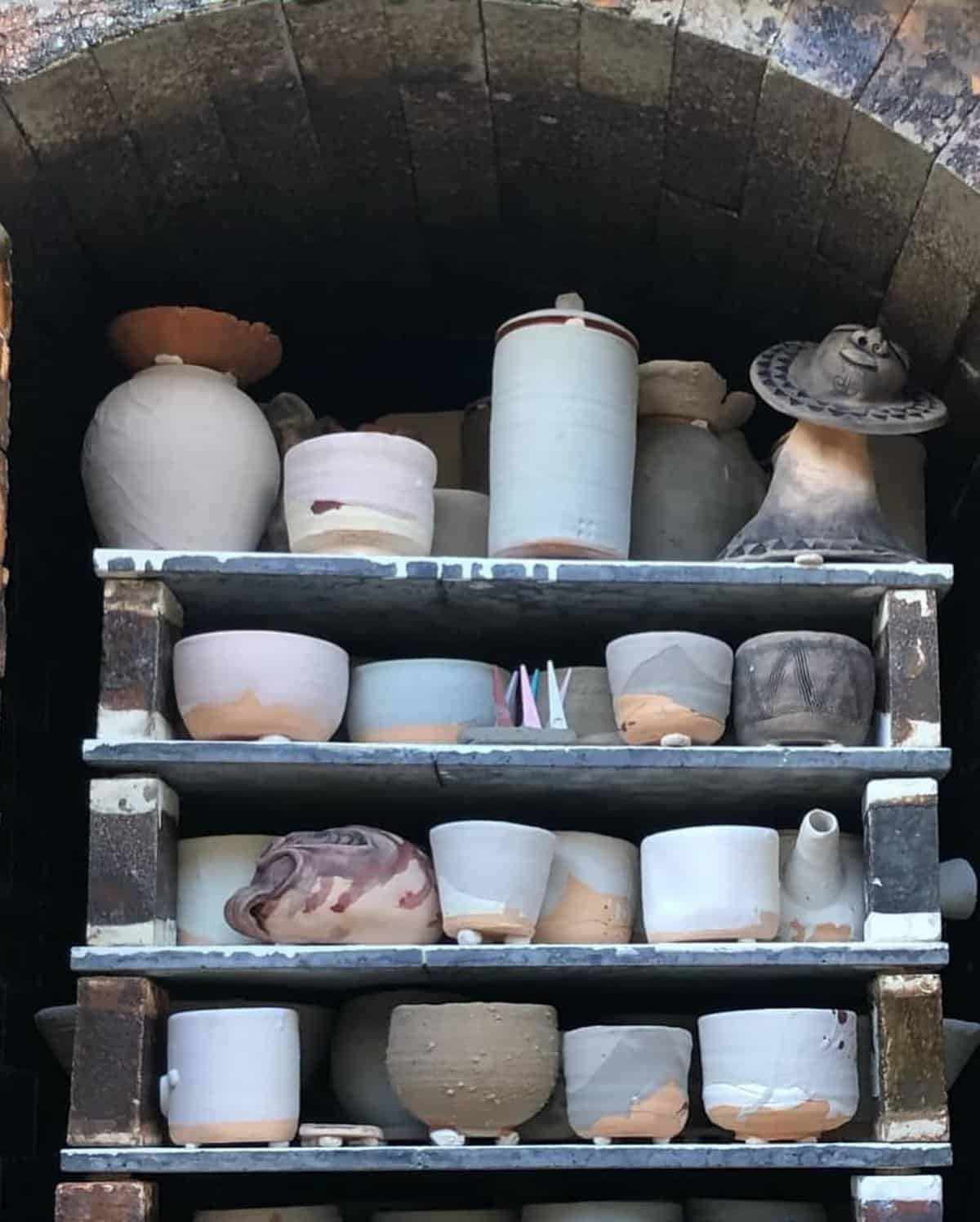

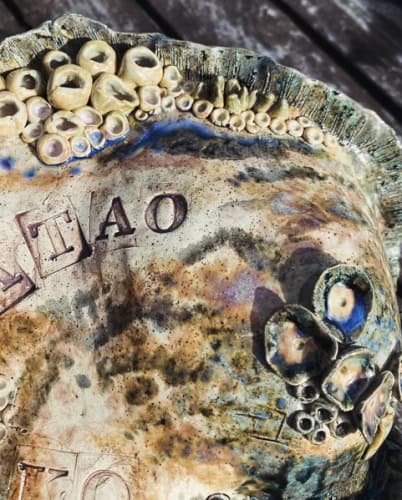
Q: Anything more than a passion for it?
A: Yes, in my recovery journey, Uku has played a massive part. I have found myself through Uku. Art is therapy, after all. It has helped me process trauma, keeps me present and grounded, and gives me purpose outside of motherhood and a voice. I am led by emotion in most of my mahi, it’s like I have a purakau that needs speaking or a feeling to explore, and it translates into my hand-built sculptures.
Another very important part of my relationship with clay is reconnecting to Te Ao Māori. I was raised away from my culture; it has been a hard journey to navigate, finding my way back, especially as an adult. I often use purakau to tell my story and try to make sense of my dual reality. I try to find stories that resonate with me, like the purakau about the creation of humans by Tāne Mahuta. He sculpted the first person, a woman, from uku/kokowai and breathed life into her through hongi, Tihei Mauri Ora! I relate to the story of Hine Ahu One as I feel my “creation” as wahine Māori has been from Uku. I’ve had life breathed into me through Uku. A lot of my pieces are about Atua Wahine (female deities).
So there are very deep connections and a profound impetus for you to work with clay and, as you say, the importance and impact of Te Ao Māori has on your work. And truth to action, as you have lived and continue to live, Art is Therapy. I’ve always wondered, generally, what the difference is between calling oneself a potter or a ceramicist?
I am more comfortable with the term potter. Ceramics is the state that clay becomes once fired, and for me, I love all the processes before the pieces are fired; it’s the making I love and connect with most. Potter speaks to me of humility and hands in the dirt, a work in progress. Ceramist for me, sounds technical, methodical and complete, three things I am not.
Q: So you are on your mettle, found your creative challenges, found your medium, and are fulfilling an earlier dream. Maybe there is more time for being a shepherdess and wool crafter in your future. I understand you have just finished a residency at Driving Creek, how did this evolve?
A: I applied to do a four-week residency at Driving Creek Pottery last October after participating in a group exhibition, ‘Ringa Wera, Ringa’ here in Kuaotunu with a new collective of Māori and Pasifika, WahineToi . I had such a fun time and felt validated by the reception of my work during the exhibition that I took the leap.
Q: How was that next step? Were you diffident and apprehensive about taking something as important as committing to a month’s residency?
A: I was so excited to arrive and have the freedom to create that the nerves weren’t really present. It was made easier because I had two friends in residency at the same time. I have just completed two weeks, and I have the second half, another fortnight, in September. Arranging the time from family to do this takes commitment and belief in doing the right thing for one’s creativity. It was the first time in 25 years of motherhood I’d had two weeks completely to myself!
Q: So, this was a four-week Residential. How was it from the beginning, and what did you find there?
A:I arrived with vague plans, but as usual, things evolved, and I made what came to me at the time. The potting community is a very generous, excitable, dedicated bunch, so working alongside the 5-6 other residents was brilliant for shared learning, creative feedback, and inspiration. The other residents made functional ware, so it has inspired me to try to befriend my wheel again.
Q:What was the schedule like? How did you use your precious time away from home?
A: DCR residencies are self-led; you run your own day, start and take breaks at will, work late into the night if you want or stumble off full of good kai and good times to bed at 8 pm. I’d get to the studio each morning and start with a new piece or add more to a larger piece that needed overnight to firm up a bit. Lots of great chats, both pottery and political; art is political after all!
I have work going into wood firing this week, which is super exciting; firing in a wood kiln gives me the finish I love most, and this is only the 2nd wood firing I’ve taken part in. Opening the kiln after a firing is better than birthdays and comes around more often if lucky.
“The Driving Creek Pottery residencies are an incredible opportunity to explore your creativity. Being self-led, there are no time constraints or interruptions. The pottery crew is really helpful and accommodating, even when that’s not their role necessarily.”
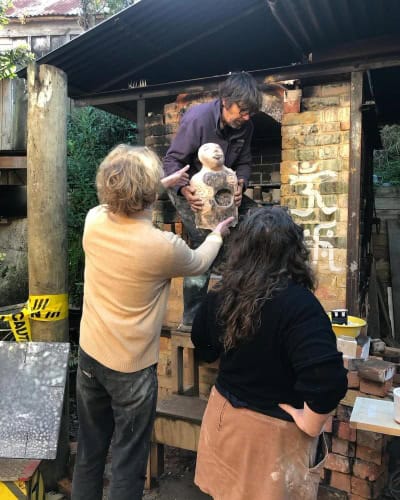
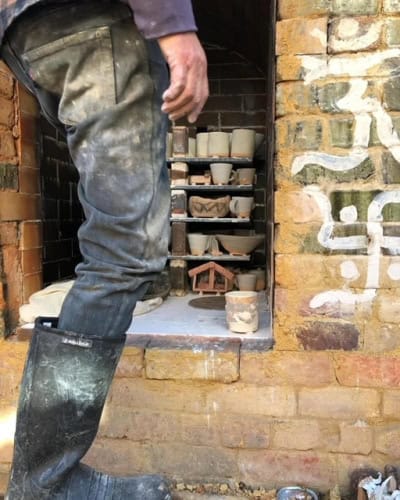
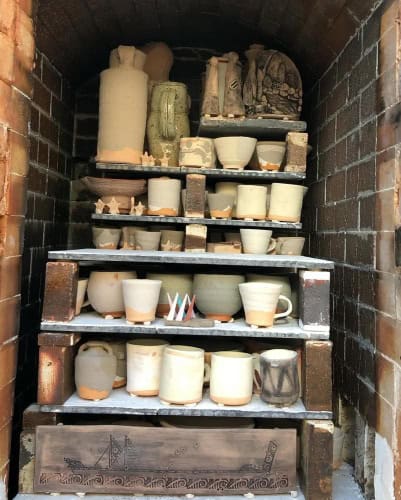
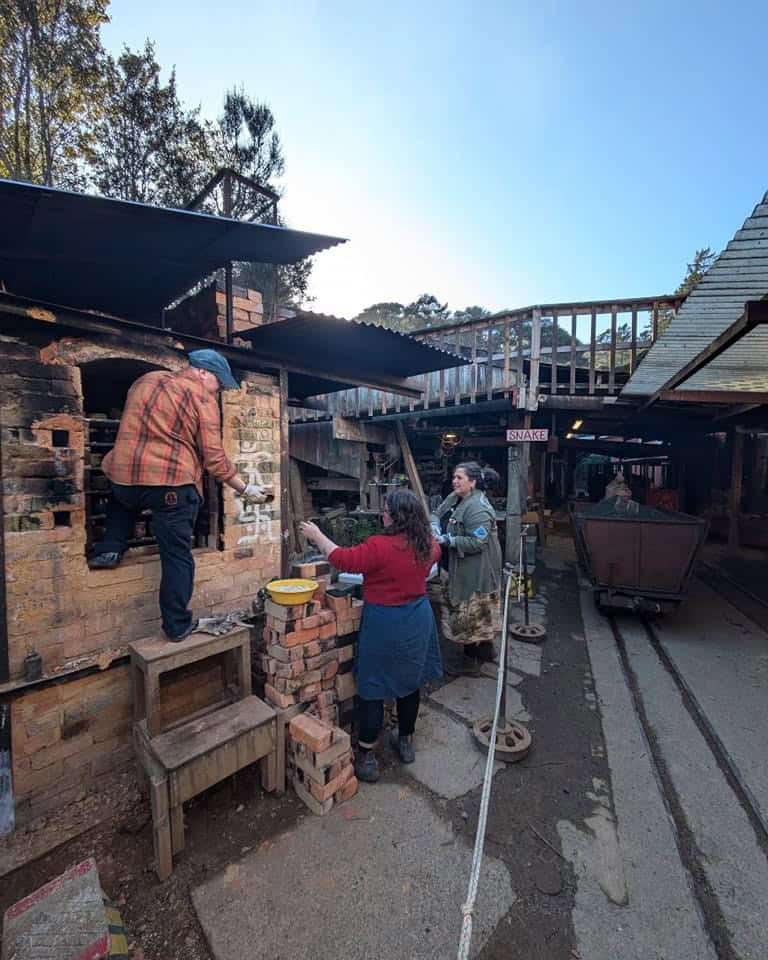
Q: What would you tell other aspiring, emerging or practising potters about a Driving Creek residency?
A: The Driving Creek Pottery residencies are an incredible opportunity to explore your creativity. Being self-led, there are no time constraints or interruptions. The pottery crew is really helpful and accommodating, even when that’s not their role necessarily. As I said previously, potters are very generous, and we all have a shared passion.
Q: So you found your people also, and now, where to from here for you?
A: I plan on applying for a residency next year, so for now, I’ll keep working away in my garage, juggling the tamariki, pets, and the responsibilities of adulthood. I’ll keep an eye out for workshops to learn more skills and keep pushing myself to make time to create and find opportunities to share Uku with others, especially with the tamariki at my kids’ kura.
Q: As a potter, what can you never be without?
A: You can’t be without your reclaim bucket. Unfired clay can be recycled. All my slip, trimmings, and experiments can be chucked in the reclaim bucket and made usable. Not only are you limiting waste and saving money, but you also become more discerning about what pieces to scrap and what pieces to invest time and energy into. This pushes me to do better and have higher standards.
Q: And a dream for the future?
A: I’d love to exhibit a collection at some stage, so I’ll work towards that over the next year.
And those in the wider community, including me, will be eager and piqued enough to want to see your work. Your images are compelling.
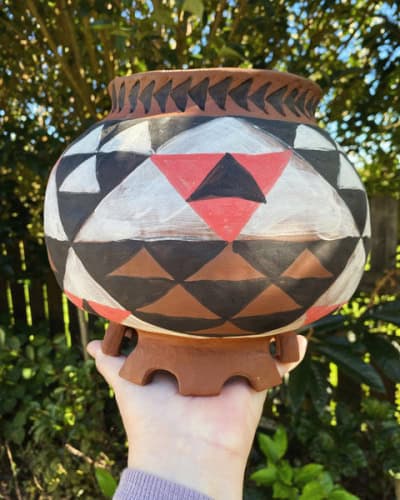
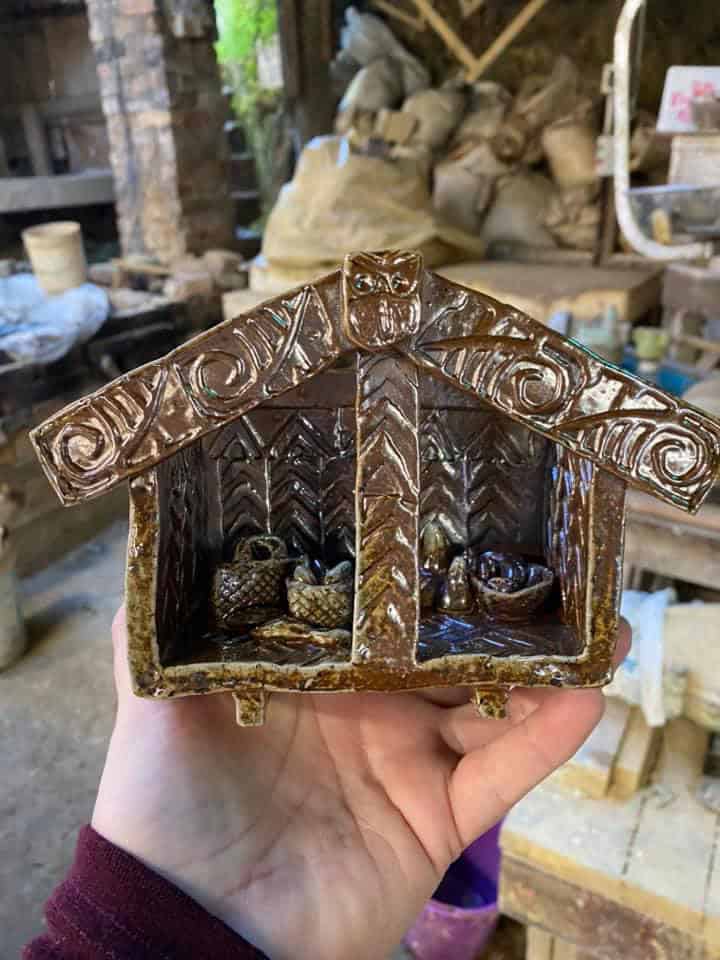
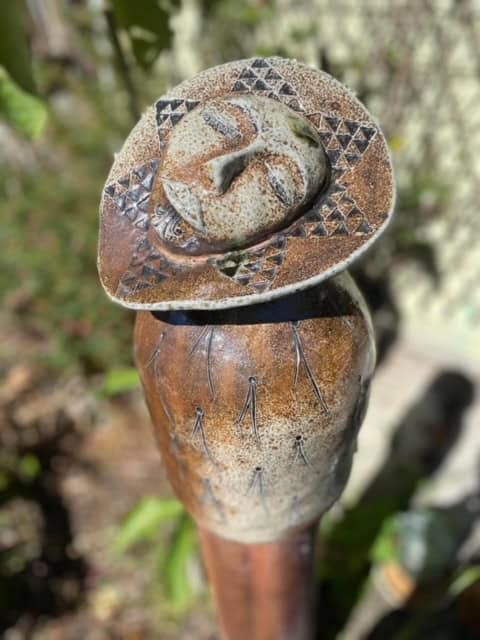
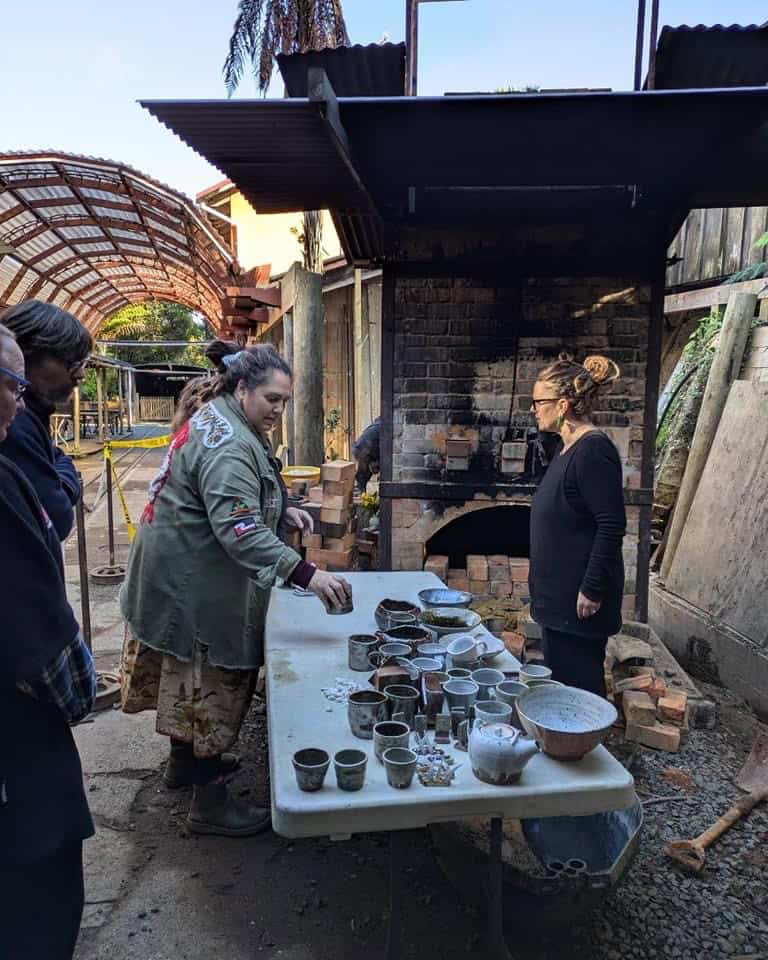

From Left: Fiona Gates, Janeen Page, Locke Unhold, Rona Ngahuia Osborne, and Charade Honey. These potters were with Fiona, doing residence at DCR.
